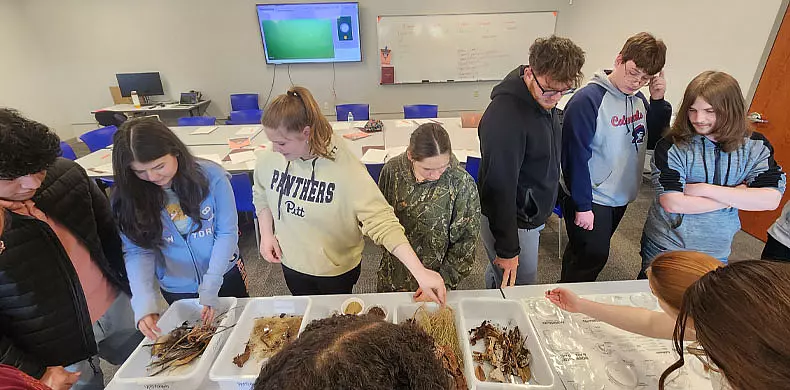Approximately 130 students shared their research, music and art during Susquehanna’s Senior Scholars Day — a long-standing tradition celebrating academic achievement and the faculty mentors who guided them along the way.
“This day is emblematic of what sets a Susquehanna education apart — our emphasis on students applying their disciplines, synthesizing four years of learning and developing a signature project that reflects how they’ve critically integrated their education under faculty guidance,” University President Jonathan Green said.
Students engaged with the campus community through poster and oral presentations of their research, music recitals and art exhibitions.
To stand or sit?
Emily Erdman ’25, of Mifflintown, Pennsylvania, and Katherine Ausmus ’25, of Bel Air, Maryland, both psychology majors, studied the impact of posture on attention and mood by asking 28 Susquehanna students to complete reading comprehension and mood assessments in sitting and standing positions. Results indicated the students performed better and reported a better mood when standing.
“There are big implications for classrooms or working professionally regarding the use of ergonomic desks and how that can positively affect productivity,” Ausmus said.
After graduation, Erdman will continue to Indiana University of Pennsylvania to pursue a doctorate in clinical psychology with plans to pursue a career in in-patient pediatric care. Ausmus will advance to West Chester University to earn a master’s degree in clinical mental health counseling with plans to pursue a career treating adults with acute mental health needs.
One of these darters is not like the others …
Scott Milligan ’25, an earth & environmental sciences major from Alloway, New Jersey, made use of the nearby Susquehanna River to study darters for his senior capstone project.
Darters are small, colorful freshwater fish that are known for their quick, darting movements — hence the name. Several species of darters can be found in the Susquehanna River and its tributaries in Pennsylvania, but not all darters are created equal.
Tessellated darters are native to and the most common darters in the Susquehanna River. Their more aggressive cousin banded darters are native to the Mississippi River but were introduced into the Susquehanna in the 1960s.

“The Mississippi River is a more intense ecosystem, so banded darters are more aggressive than their tessellated counterparts, which likely affects their behavior,” Milligan said.
To investigate this, he used a mock stream channel system at Susquehanna’s Freshwater Research Institute. Each section contained two fish in three pair combinations: tessellated and tessellated, banded and banded, and tessellated and banded, and had four substrate sizes available, from gravel to large cobble, with preference of substrate size observed over a two-hour trial. Milligan’s research indicated that tessellated darters alter their behavior when in the presence of banded darters by hiding behind larger substrate, likely adversely impacting their access to food and mating.
After graduation, Milligan will join Edge Engineering & Science in Houston, Texas, as a protected species technician.




